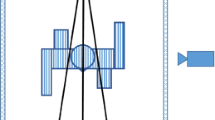Abstract
In this paper we introduce a novel approach for learning view-invariant gait representation that does not require synthesizing particular views or any camera calibration. Given walking sequences captured from multiple views for multiple people, we fit a multilinear generative model using higher-order singular value decomposition which decomposes view factors, body configuration factors, and gait-style factors. Gait-style is a view-invariant, time-invariant, and speed-invariant gait signature that can then be used in recognition. In the recognition phase, a new walking cycle of unknown person in unknown view is automatically aligned to the learned model and then iterative procedure is used to solve for both the gait-style parameter and the view. The proposed framework allows for scalability to add a new person to already learned model even if a single cycle of a single view is available.
Preview
Unable to display preview. Download preview PDF.
Similar content being viewed by others
References
BenAdbelkader, C., Cutler, R., Davis, L.: Stride and cadence as a biometric in automatic person identification and verification. In: Proc. FGR, pp. 357–363 (2002)
Bhanu, B., Han, J.: Individual recognition by kinematic-based gait analysis. In: Proc. ICPR, vol. 3, pp. 343–346 (2002)
Collins, R., Gross, R., Shi, J.: Silhouette-based human identification from body shape and gait. In: Proc. FGR, pp. 351–366 (2002)
Cunado, D., Nixon, M.S., Carter, J.: Automatic extraction and description of human gait models for recognition purposes. Computer Vision and Image Understanding 90, 1–41 (2003)
Elgammal, A.: Nonlinear generative models for dynamic shape and dynamic appearance. In: Proc. Int. Workshop GMBV (2004)
Elgammal, A., Lee, C.-S.: Separating style and content on a nonlinear manifold. In: Proc. CVPR, pp. 478–485 (2004)
Gross, R., Shi, J.: The cmu motion of body (mobo) database. Technical Report CMU-RITR- 01-18, Robotics Institute, Carnegie Mellon University, Pittsburgh, PA (June 2001)
Han, J., Bhanu, B.: Statistical feature fusion for gait-based human recognition. In: Proc. CVPR, pp. 842–847 (2004)
He, Q., Debrunner, C.: Individual recognition from periodic activity using hidden markov models. In: IEEE Workshop on Human Motion, pp. 47–52 (2000)
Huang, P., Haris, C., Nixon, M.: Recogising humans by gait via parametric canonical space. Artificial Intelligence in Engineering 13, 359–366 (1999)
Johnson, A.Y., Bobick, A.F.: A multi-view method for gait recognition using static body parameters. In: Bigun, J., Smeraldi, F. (eds.) AVBPA 2001. LNCS, vol. 2091, pp. 301–311. Springer, Heidelberg (2001)
Kale, A.K.R.: Chowdhury, and R. Chellappa. Towards a view invariant gait recognition algorithm. In: Proc. on Advanced Video and Signal Based Surveillance, pp. 143–150 (2003)
Kale, A., Sundaresan, A.N., Rajagopalan, N.P., Cuntoor, A.K., Roy-Chowdhury, V.: Kruger, and R. Chellappa. Identification of human using gait. IEEE Trans. Image Processing 13(9), 1163–1173 (2004)
Lathauwer, L.D., de Moor, B., Vandewalle, J.: A multilinear singular value decomposiiton. SIAM Journal On Matrix Analysis and Applications 21(4), 1253–1278 (2000)
Lathauwer, L.D., de Moor, B., Vandewalle, J.: On the best rank-1 and rank-(r1, r2,., rn) approximation of higher-order tensors. SIAM Journal on Matrix Analysis and Applications 21(4), 1324–1342 (2000)
Lee, C.-S., Elgammal, A.: Gait style and gait content: Bilinear model for gait recogntion using gait re-sampling. In: Proc. FGR, pp. 147–152 (2004)
Lee, L., Dalley, G., Tieu, K.: Learning pedestrian models for silhouette refinement. In: Proc. ICCV, pp. 663–670 (2003)
Liu, Y., Collins, R., Tsin, Y.: Gait sequence analysis using frienze patterns. In: Heyden, A., Sparr, G., Nielsen, M., Johansen, P. (eds.) ECCV 2002. LNCS, vol. 2351, pp. 657–671. Springer, Heidelberg (2002)
Liu, Z., Sarkar, S.: Simplest representation yet for gait recognition: Averaged silhouette. In: Proc. ICPR, pp. 211–214 (2004)
Murase, H., Sakai, R.: Moving object recognition in eigenspace representation: gait analysisand lip reading. Pattern Recognition Letters 17, 155–162 (1996)
Phillips, P.J., Sarkar, S., Robledo, I., Grother, P., Bowyer, K.: Baseline results for the challenge problem of human id using gait analysis. In: Proc. FGR, pp. 137–142 (2002)
Poggio, T., Girosi, F.: Networks for approximation and learning. Proceedings of the IEEE 78(9), 1481–1497 (1990)
Shakhnarovich, G., Lee, L., Darrell, T.: Integrated face and gait recognition from multiple views. In: Proc. CVPR, pp. 439–446 (2001)
Tanawongsuwan, R., Bobick, A.: Modelling the effects of walking speed on appearancebased gait recognition. In: Proc. CVPR, pp. 783–790 (2004)
Tenenbaum, J.B., Freeman, W.T.: Separating style and content with biliear models. Neural Computation 12, 1247–1283 (2000)
Tolliver, D., Collins, R.T.: Gait shape estimation for identification. In: Kittler, J., Nixon, M.S. (eds.) AVBPA 2003. LNCS, vol. 2688, pp. 734–742. Springer, Heidelberg (2003)
Vasilescu, M.A.O.: Human motion signatures: Analysis, synthesis, recogntion. In: Proc. ICPR, vol. 3, pp. 456–460 (2002)
Vasilescu, M.A.O., Terzopoulos, D.: Multilinear analysis of image ensembles: TensorFaces. In: Heyden, A., Sparr, G., Nielsen, M., Johansen, P. (eds.) ECCV 2002. LNCS, vol. 2350, pp. 447–460. Springer, Heidelberg (2002)
Vasilescu, M.A.O., Terzopoulos, D.: Multilinear subspace analysis of image ensembles. In: Proc. CVPR (2003)
Wang, L., Tan, T., Ning, H., Hu, W.: Silhouette analysis-based gait recognition for human identification. IEEE Trans. PAMI 25(12), 1505–1518 (2003)
Zhao, G., Chen, R., Liu, G., Li, H.: Amplitude spectrum-based gait recognition. In: Proc. FGR, pp. 23–28 (2004)
Author information
Authors and Affiliations
Editor information
Editors and Affiliations
Rights and permissions
Copyright information
© 2005 Springer-Verlag Berlin Heidelberg
About this paper
Cite this paper
Lee, CS., Elgammal, A. (2005). Towards Scalable View-Invariant Gait Recognition: Multilinear Analysis for Gait. In: Kanade, T., Jain, A., Ratha, N.K. (eds) Audio- and Video-Based Biometric Person Authentication. AVBPA 2005. Lecture Notes in Computer Science, vol 3546. Springer, Berlin, Heidelberg. https://doi.org/10.1007/11527923_41
Download citation
DOI: https://doi.org/10.1007/11527923_41
Publisher Name: Springer, Berlin, Heidelberg
Print ISBN: 978-3-540-27887-0
Online ISBN: 978-3-540-31638-1
eBook Packages: Computer ScienceComputer Science (R0)




